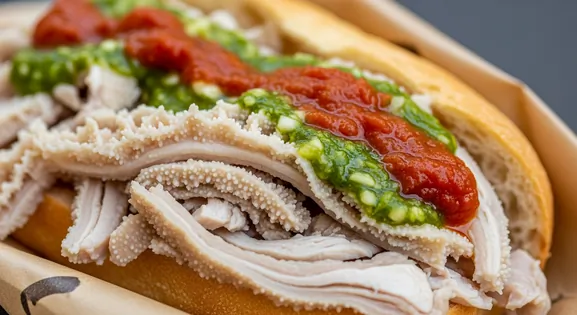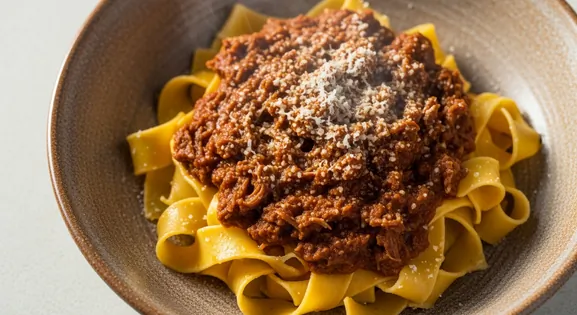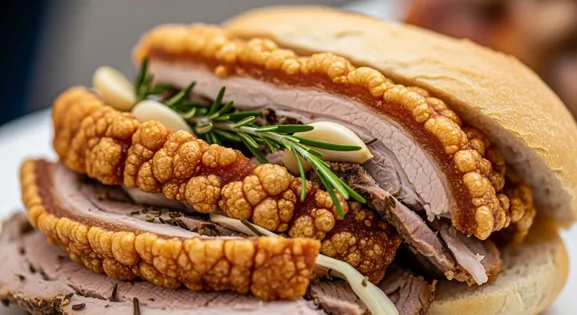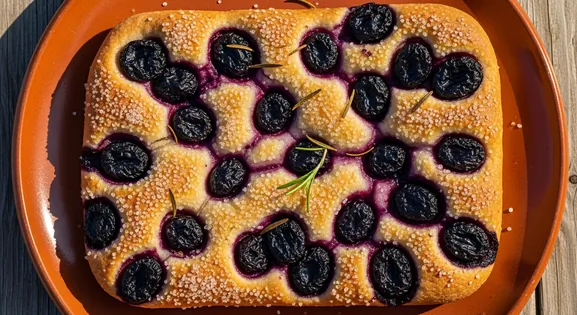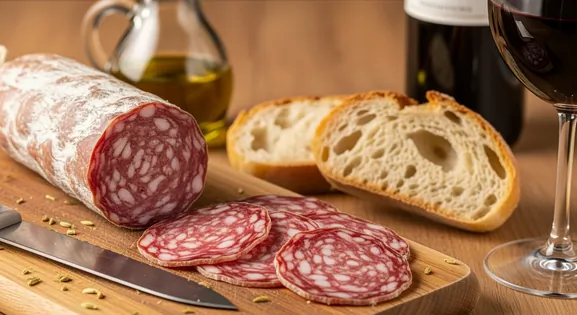
Finocchiona
FinocchionaFlorence's fennel-infused salami, a Tuscan culinary icon.
Step into Florence, and you're immediately enveloped by the aroma of roasting meats and fresh pasta. This city's culinary soul is deeply rooted in its history, offering a journey through rustic flavors and refined traditions. Prepare to savor every moment of your Florentine food adventure.
Always order Florentine steak rare (al sangue). It's traditionally served thick-cut and minimally seasoned, meant to be shared. Don't ask for it well-done; it's considered sacrilege.
Before dinner, join locals for aperitivo. Many bars offer a drink with complimentary snacks or a buffet. It's a great way to sample local bites and unwind.
Seek out trattorias advertising "cucina casalinga" (homemade cooking). These family-run spots often offer authentic, hearty Tuscan dishes at fair prices, away from tourist traps.
Mercato Centrale is Florence's vibrant culinary heart, a two-story market offering fresh produce downstairs and a modern food court upstairs. It's a perfect spot to sample diverse Tuscan specialties and international flavors.
Sant'Ambrogio Market offers a more local and traditional Florentine market experience. Here, you'll find fresh produce, meats, cheeses, and prepared foods, popular with residents seeking authentic Tuscan ingredients.
Santo Spirito, located in the Oltrarno district, is known for its authentic trattorias and artisan workshops. This charming area offers a more relaxed dining experience away from the main tourist crowds, with traditional Florentine fare.
Via de' Neri is Florence's bustling street food corridor, famous for its sandwich shops and quick bites. It's a lively spot where locals and visitors grab delicious, portable Tuscan specialties on the go.
Florence's food scene celebrates the Tuscan philosophy of simplicity and quality ingredients. Deeply rooted in tradition, Florentine cuisine features rustic dishes like bistecca alla fiorentina (T-bone steak), ribollita (bread soup), and lampredotto (tripe sandwich). The city embraces the 'farm-to-table' concept centuries before it became trendy elsewhere, with seasonal eating and regional ingredients forming the cornerstone of its culinary identity.
How to shop like a local at Florence's vibrant food markets
Essential etiquette for enjoying coffee in Florence
Summer temperatures often exceed 35°C / 95°F, making outdoor dining uncomfortable
Public fountains provide quality drinking water; bring refillable bottles
Fall brings prized white truffles and porcini mushrooms to Florentine menus
November marks the new olive oil season with tastings at markets
Unlike other cities, Florence's street food is concentrated in a few specific spots. Try All'Antico Vinaio for famous sandwiches, Mercato Centrale's upper floor for various options, or traditional trippa and lampredotto stands like Nerbone in the Central Market or I Trippaio del Porcellino near Piazza della Repubblica.
Avoid restaurants with picture menus, multilingual signs, or staff inviting you in from the street. Look for places away from major attractions, especially across the Arno in Oltrarno. Check if locals are dining there, and restaurants with handwritten daily specials often serve more authentic food.
Dining in Florence is generally relaxed, but a few customs are good to know. Don't expect to rush; meals are meant to be savored. Tipping is appreciated but not mandatory, usually rounding up or leaving a few euros.
Yes, Florence's tap water is of excellent quality for drinking. The city also has numerous public fountains (fontanelle) providing free, quality drinking water. Bring a refillable bottle to save money and reduce plastic waste.
Florence's fennel-infused salami, a Tuscan culinary icon.
Florence's humble, iconic tripe sandwich, a true taste of local tradition.
Florence's rich, rustic wild boar ragu on wide, handmade pasta ribbons.
Florence's succulent roast pork, often in a panino, a market favorite.
Florence's seasonal grape flatbread, a sweet and savory autumn treat.
At Tasteplorers, our mission is to provide the most accurate and useful travel information in the world. To achieve this, all content on this site is created through our unique editorial framework. We utilize leading AI research tools, guided by our proprietary prompts, and a multi-stage validation process. This entire system is overseen by our editorial team to ensure everything we publish meets our high standards for accuracy, cultural nuance, and practical value for travelers.
Learn more about our Editorial Process and our Mission.
Discover Naples' best street food areas including Spaccanapoli, Quartieri Spagnoli & Porta Nolana Market. Expert pizza tips, local specialties & must-try authentic dishes.
Discover Rome's best food areas including Testaccio, Trastevere & Campo de' Fiori. Expert quality-focused tips, authentic pasta dishes & where to find traditional Roman cuisine.
Navigate Italy's diverse culinary landscape with our expert guide. Discover authentic Italian cuisine from Rome's street food to regional specialties, making informed choices for a great travel experience.
Navigate Spain's vibrant food scene with our expert guide. Discover authentic Spanish cuisine from Barcelona's tapas bars to regional specialties with quality-focused choices.
Discover Europe's diverse culinary landscape, from Mediterranean flavors to hearty Alpine fare. Learn to navigate markets, decode menus, and eat like a local.
Discover the vibrant cuisines of Latin America & the Caribbean. Our expert guide covers everything from Mexican street food to Peruvian ceviche and market tips.
Explore Oceania's diverse food scene. Learn about Polynesian earth ovens, Fijian feasts, and the vibrant café culture of Australia and New Zealand.
Explore Southeast Asia's diverse food cultures from Thailand to Vietnam. Get expert tips on navigating spice levels, choosing quality vendors, and understanding the rich traditions of the region.
